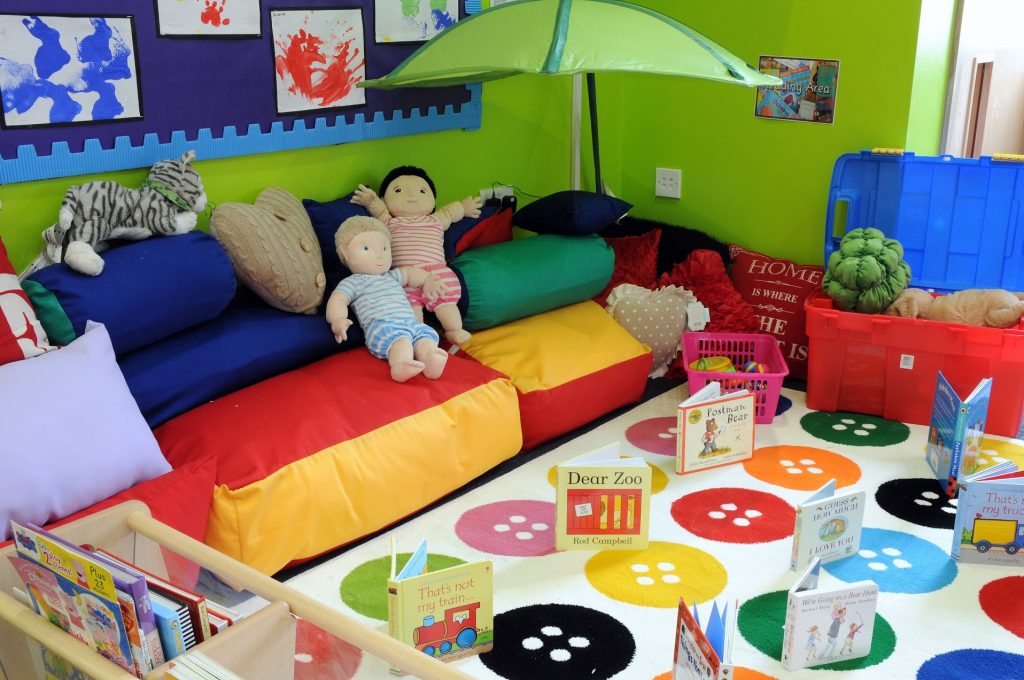Can everyone in early years create continuous provision?
If continuous provision is a new concept to you, read our part one guide here to find out more about the benefits of continuous provision in the early years. Continuous provision can be created across the early years regardless of whether you work in a baby room or in a preschool room. This useful guide will create clear and easy steps you can put into place in each of the rooms within any early years setting.
How can continuous provision be created in baby room?
Let’s first explore how continuous provision can be created in a baby room and the impact that this can have on the learning and development. As all practitioners know it is important to create a calm, comfy yet stimulating room for the youngest children within our care and sometimes trying to create this balance can be difficult. This can be achieved by carefully planning the space you have available and which areas of the EYFS you are trying to promote. As practitioners we know all seven areas of the Early Years Foundation Stage are important however the new framework has split the EYFS into two areas; prime and specific. The prime areas are the ones which a baby room should be concentrating the most time on, as it is believed that development in these areas will then lead to development in the other areas. Keeping this in mind continuous provision creates a space which allows every child to play and explore, actively think, create and critically think. To help you achieve this why not try these helpful tips.
- Create comfy cosy areas where the babies can feel safe and secure using cushions, blankets, mirrors and photo’s.
- You may also choose to use a variety of low level units which create excitement and intrigue, and also contain a variety of accessible resources that the babies can access when they are interested such as books, photos and instruments.
- Keep the areas organised and ensure each child has the space they need to explore confidently.
- Use open ended resources such as treasure baskets, sensory bottles and messy play areas, as having these readily available will engage all of the babies senses and lead to a more holistic learning approach
- Ensure that learning can be achieved in each area and that it has a continuous feel with no sudden changes.
Creating continuous provision in the Toddler room
Toddlers love exploring and schemas really begin to show themselves during this stage. Again careful planning for continuous provision ensures that all seven areas are being promoted. You may choose to promote continuous provision in the toddler room through:
- Introducing more units with clearly labelled boxes, you may choose to sort your resources by areas now for example a mark making area, small world area etc…
- Ensure that again there is enough room for each child to explore their own interests and to move freely between the areas
- Try to minimise conflict by having enough resources for all the children to explore and promote positive behaviour
- Try to incorporate children’s interests into each area through your continuous provision
- Keep an area for rest periods and a space to relax as some children at this age may still need a sleep during the day.
Ways to introduce continuous provision in a Preschool room
This is an important room in developing and promoting school readiness. Having the perfect continuous provision will give the children all the support they need to develop in all areas and to gain the independence they will need ready for school. Continuous Provision can be created in your preschool room through:
- Creating more structured areas, label your boxes appropriately and ensure the children are aware of what they should doing in each area
- Ensure areas are accessible for all children and meet all needs and abilities
- Give children the freedom they need to learn and explore, use the resources available in your continuous provision to extend learning and development
- It is important to have resources that promote each of the seven areas of the early years foundation stage, consider how you can incorporate this into your room, especially if you have a limited amount of space
- Give the children the time they need to observe, interact and make sense of the resources and their surrounding, allow a level of flexibility in your routines for times when the children are truly engaging and critically thinking.

